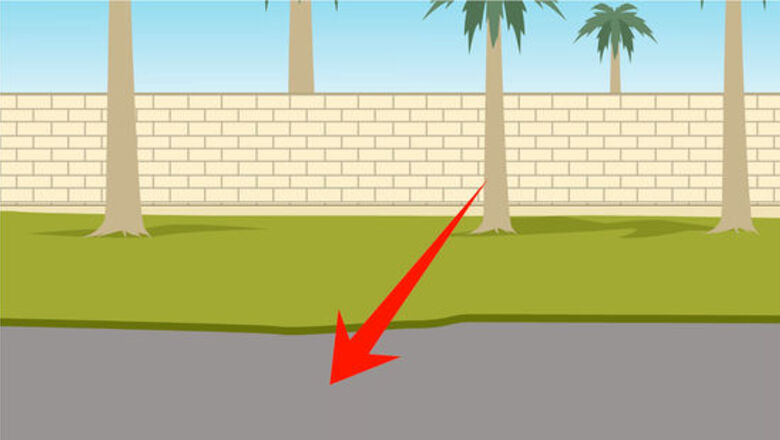
views
X
Research source
When this trick is performed correctly, the skateboarder is able to leap into the air, taking the board with them in such a way as to make it appear as if the board is attached to their feet. The "Ollie" is the basis of many other skateboarding tricks, so it is important to learn and learn well if you plan on attempting other, more complicated maneuvers. Fortunately, it is relatively easy to master with sufficient practice.
Learning the Basics
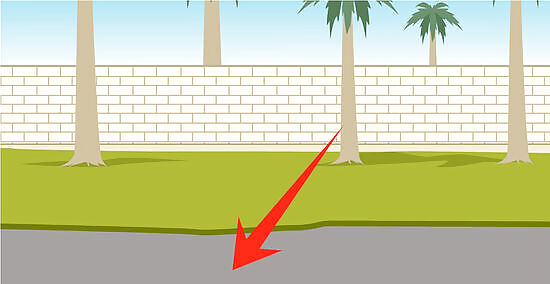
Find a good spot. To begin with, find a flat space to practice this trick. If you are not experienced with skateboarding, you will want to do this in a place where the board will remain completely still (e.g. will not roll). If you are concerned about falling, you might even want to start in the grass or even a carpeted surface.

Position your feet. Place your front foot near the middle of your board, about two inches from your bolts. Put your back foot on the tail. Your front foot should be completely on the skateboard, just behind the front bolts. The ball of your back foot should align with the center of the board. This means your heel will stick out, off the board's surface. Both feet should face straight ahead. Do not angle either foot on the board.
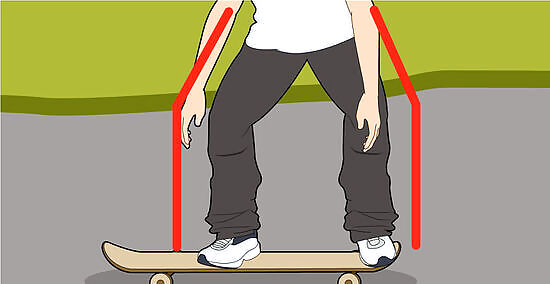
Bend your knees. You'll need to bend your knees so you can both pop the tail and jump up.
Pop the tail. Rapidly and forcefully push down hard on the tail of your board with your back foot The downward force you apply to the tail of the skateboard will cause it to strike the ground, resulting in powerful upward momentum on the board as it "pops" up. Think of this as a light-footed flick downwards with your ankle. Be careful not to push too hard down on your tail, because then your weight will prevent the board from going up in the air.
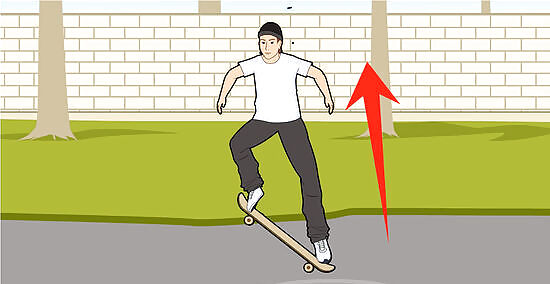
Jump up. Immediately after popping the tail, straighten your legs to jump up into the air.
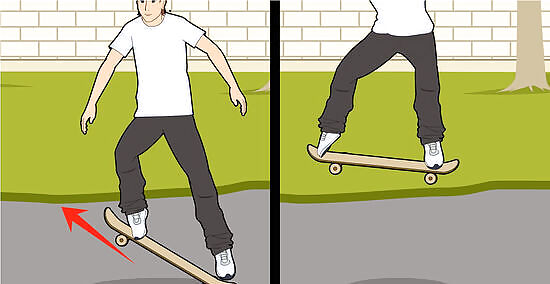
Sweep your front foot along the board. Slide the side of your front foot along the surface of the board as the front end comes up. The friction of your foot rubbing against the rough grip tape will help drag the board upward along with your body.
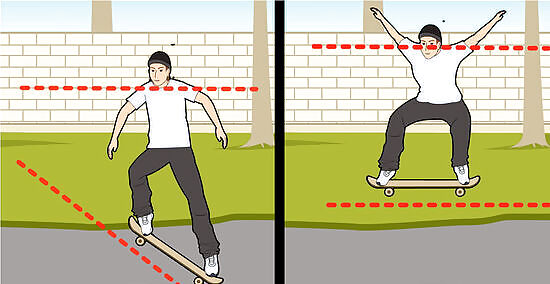
Level out. Bring up your back foot and level the board underneath you with your feet as you reach the high point of your jump. You may need to push down slightly on your front foot to get the board level with your shoulders.

Land. Extend your legs to the ground as you drop, keeping your knees bent to absorb the shock of landing. Keeping your knees bent is important both for avoiding knee injury and keeping control of the board.
Troubleshooting the Basics
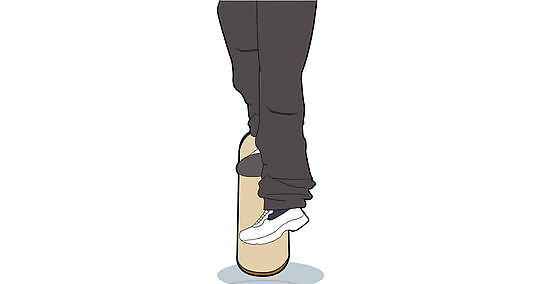
Work on the pop. Determining the right amount of force to apply on the tail to make the pop happen the way it should is one of the trickiest parts of learning this maneuver. You need to push down hard and fast enough to not only lift the front end of the board, but also cause the tail to strike the ground with enough force to cause it to bounce upward off the ground. The harder you slam the board down, the higher up it will bounce. That said, when you are first trying to master this, keeping control is more important than a high jump. Experiment with different amounts of force until you get to the point where you can pop the board without losing control, and then work on increasing the height of the pop.

Work on your sweep. Equally difficult is the sweep of your foot that pulls the board upward with you as you jump and also keeps it pointed in the direction you want it to go. This will likewise require a fair amount of trial and error. You need to keep your front foot relaxed enough to roll the ankle slightly. Your first impulse might be to tense up these muscles, and you will need to learn to resist that urge. To keep control, you must use the friction between the edge of your shoe and the board as you execute the sweep, which should take your foot all the way to the front edge of the board.
Work on the timing. Another challenging part of doing this trick correctly is getting the timing right. Although the steps should be carried out in the order described in Part 1, you need to carry these steps out very rapidly, in just a fraction of second. In particular, the pop and the jump need to be carried out at almost the same time, essentially in one motion. The timing is everything here, and will take practice. To get a better sense of the timing, you can watch slow-motion videos of people performing the trick so you can carefully observe the details of what you need to do.
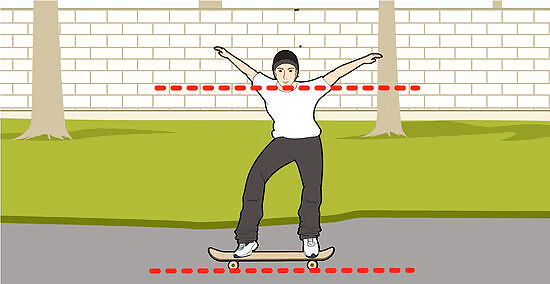
Work on your landing. Lastly, landing without falling off the board can be a real trick. The key here is to both keep your knees bent and get your board level before it lands. Ideally, you want to land all four wheels at the same time. Keep your shoulders level throughout the process. Resist the temptation to lean forward as you perform this maneuver, as doing so may cause you to fall off the front of the board when you land.
Mastering the Maneuver

Start rolling. Once you've go the basic technique down, you can start working on making this trick look a little more impressive. The first step is learning to execute the ollie while the board is moving. Get your board rolling at a comfortable speed and give it a try, executing the move in the same way and with your feet in the same position as you did when the board was stationary.
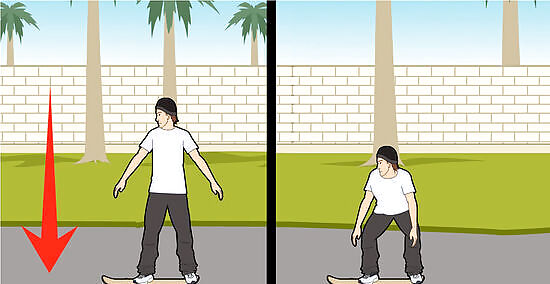
Crouch down low. The next step is learning jump higher after the pop. Keeping your center of mass low will allow for a more impressive jump, so the lower you can crouch will still keeping control of the board, the better. Do not twist your hips or lean your shoulders forward. Keep your center of balance between your feet to keep control.
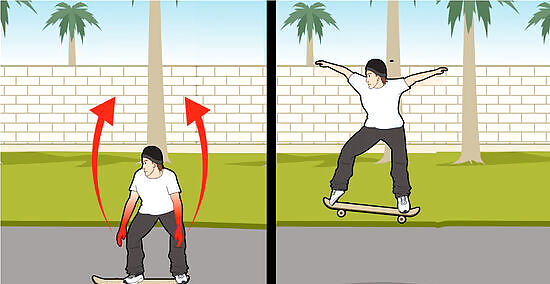
Raise your arms as you jump. Try rapidly raising your arms as you execute the jump to increase your upward momentum.

Delay the sweep. If you can delay your sweep by just a fraction of a second, you can achieve a higher jump. Determining the right amount of delay to really master this will take some trial and error.

Pull up your knees. For the most impressive ollie, pull both of your knees up toward your chest as high as you can as you reach the high point of your jump, and level the board in this position.
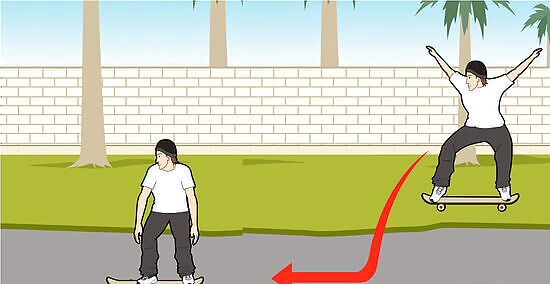
Keep rolling as you land. Your forward momentum should keep rolling forward as you land. Again, not falling off at this stage will take some practice, but once you've mastered the fundamentals, this is the icing on the cake.




















Comments
0 comment